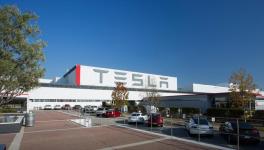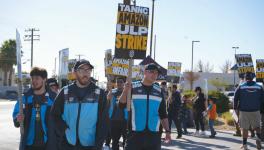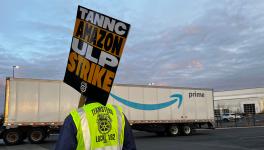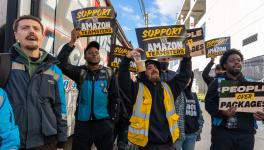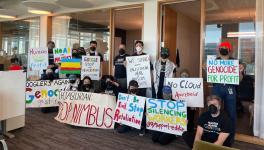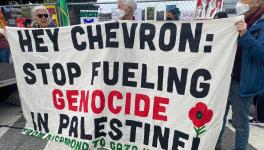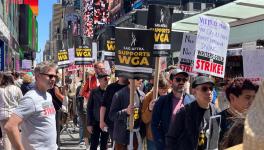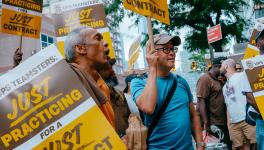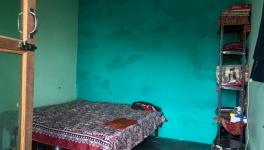Amazon, Tesla Among Most Dangerous Places For Workers In US, Says Report
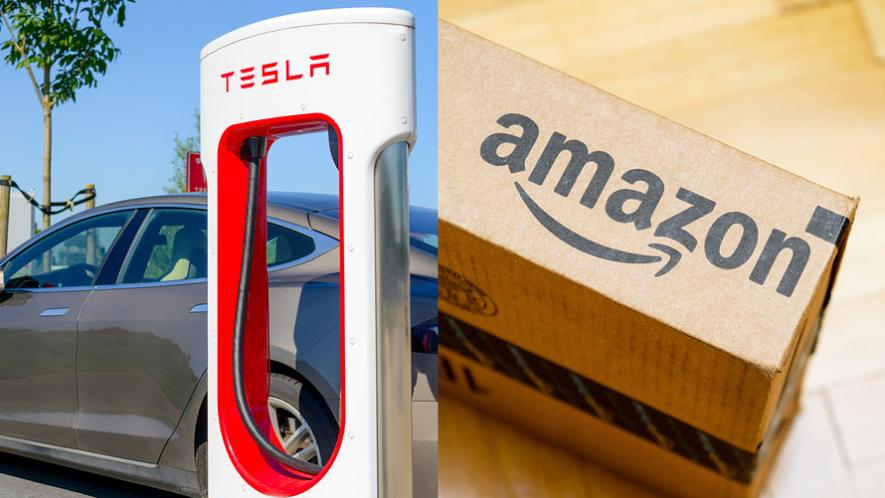
Amazon and Tesla are among the most dangerous workplaces in the United States, says a 2018 annual reportby theNational Council for Occupational Health and Safety (COSH).
Titled The Dirty Dozen 2018: Employers Who Put Workers and Communities at Risk, the report has listed 12 companies that foster the most hazardous working conditions and environments in the US.
In 2016, a total of 5,190 people in the country died from “workplace trauma”, says the report citing the data from the U.S. Bureau of Labor Statistics. The report notes that this was “a seven percent increase from 2015 and a 12 percent increase over a five-year period dating back to 2012.”
These deaths include “sudden, tragic events — such as falling from a height, being struck by a vehicle or being crushed by a machine.”
“In addition to more than 5,000 deaths from acute workplace trauma, an estimated 95,000 workers die annually in the U.S. from cancers, respiratory and circulatory diseases and other illnesses associated with long-term exposure in the workplace,” it says.
Of course, Amazon (the world’s largest e-commerce company), and Tesla (manufacturers of electric cars and other cutting-edge tech) featuring on the “dirty dozen” list is not surprising. The inhumane conditions faced by workers in the warehouses and factories run by these modern, even cutting-edge, tech industries is well-documented.
At Amazon,, seven workers have been killed at Amazon warehouses since 2013 — of which three workers were killed within a span of five weeks at three different locations in September and October 2017.
The report excludes another reported deathof a worker at Amazon’s warehouse at Sacramento, California in December 2017.
These seven workers died by being crushed by forklifts, caught in the conveyor belt, killed by a pallet loader, run over by a truck or car, while one of them collapsed and had a cardiac event after working an overnight shift (working as a “picker”, this person had to walk more than 12 miles per shift) — all inside the premises of Amazon warehouses.
While this report only talks about the Amazon warehouses in the US, there are similar reports of gruelling work conditions from the company’s warehouses in other countries as well.
Given that the company has already deployed thousands of robots across its warehouses, it is clear that Amazon wants their workers to become robotstoo.
In the UK, the GMB trade union in 2015 statedthat Amazon workers were under so much pressure to perform as “above-average Amazon robots” that it was making them physically and mentally ill.
In 2017, workers at six Amazon warehouses in Germany and at its main distribution hub in Italy went on strike, protesting against conditions of work that “endanger the health of its employees” and demanding overtime pay.
In fact, there are reports and more reportsof workers being terribly overworked with impossible targets to meet.
Amazon has faced class-action suits by workers stating they were denied breaks, overtime pay, and the commensurate level of wages. Workers have even sued the company over security checkpoint waits wasting workers’ time without paying them for it.
One worker describedhaving a 15 seconds or less to put away an item in order to get through 250 items in an hour, as well as toilet breaks and lunch breaks that are stringently timed, while exhausted workers fall asleep on their feet. That is, if they don’t faint.
In 2011, a local newspaper reportinvestigated the working conditions at an Amazon warehouse in Pennsylvania, US, where workers would regularly faint after labouring in more than 100-degree heat — while ambulances would wait outside to take the collapsed workers away. After the report was published, criticism forced Amazon to install air-conditioning in the warehouse.
And while the working conditions are not getting any better, Amazon recently patented designs for ultrasonic wristbands that would be able to track the workers’ hand movements in warehouses, and would “buzz” if the worker’s hands begin moving in the wrong direction — literally keeping the workers on an electronic leash.
Meanwhile, let us not forget that Jeff Bezos, the founder and CEO of Amazon, is currently the richest person in the world, even as the company itself is on its way to becoming the world’s first trillion-dollar company.
So while the workers are overworked, injured on a daily basis, and so underpaid that they have to rely on food stamps, the company gets tax breaks. It is reported that Amazon is among the top 20 companies that employ food stamp recipients, who are workers in its warehouses, in four of the five states surveyed in the US.
“Despite a disturbing pattern of preventable deaths, Amazon is demanding huge tax breaks for its new headquarters – on top of $1.1 billion in subsidies American state and local taxpayers have given the company since 2000,” notes the COSH report.
“Even as Amazon workers are injured and die on the job, the company is playing locality against locality to see which taxpayers will pay the most for the privilege of hosting ‘H2Q,’ Amazon's proposed second headquarters. Newark, New Jersey, one of twenty finalists, is offering the online retailing giant $7 billion in taxpayer subsidies.”
As the report points out, “His (Bezos’) vast wealth depends, in large part, on a business model that features a relentless work pace and constant monitoring of employees. These workplace characteristics, coupled with the lack of an intentional health and safety system program, are a recipe for disaster.”
As for Tesla, while no workplace fatalities have been reported yet, the working conditions are almost as brutal, with injuries being a daily feature, especially at the company’s primary auto plantat Fremont in California, which employs around 10,000 workers.
The COSH report says that “recordable injuries (requires medical treatment beyond first aid) for workers at Tesla Motors were 31 percent higher than for the rest of the automotive industry in 2015 and 2016.”
As for serious injuries, they are 83% higher at Tesla than the industry average. In fact, an independent investigation found the company “has failed to report some of its serious injuries,” says the report. Injury rates at the company were higher than even “some industries commonly associated with risky work, such as sawmills and slaughterhouses,” says the report citing a Los Angeles Times article.
Tesla founder and CEO Elon Musk is rankedthe world’s 47thrichest person, with a net worth of $19.9 billion.
In February 2017, a Tesla employee wrote a blog post, also cited by the report, where he described the safety and health hazards faced daily by workers at the company.
“I often feel like I am working for a company of the future under working conditions of the past,” he wrote.
This report is only one example of how under the veneer of technological innovation and sophistication, supported by the huge tax breaks by governments and softened by the glamorous public images of their billionaire-owners, these ruthless profit-seeking companies are destroying innumerable human lives — even in advanced capitalist countries.
Get the latest reports & analysis with people's perspective on Protests, movements & deep analytical videos, discussions of the current affairs in your Telegram app. Subscribe to NewsClick's Telegram channel & get Real-Time updates on stories, as they get published on our website.









